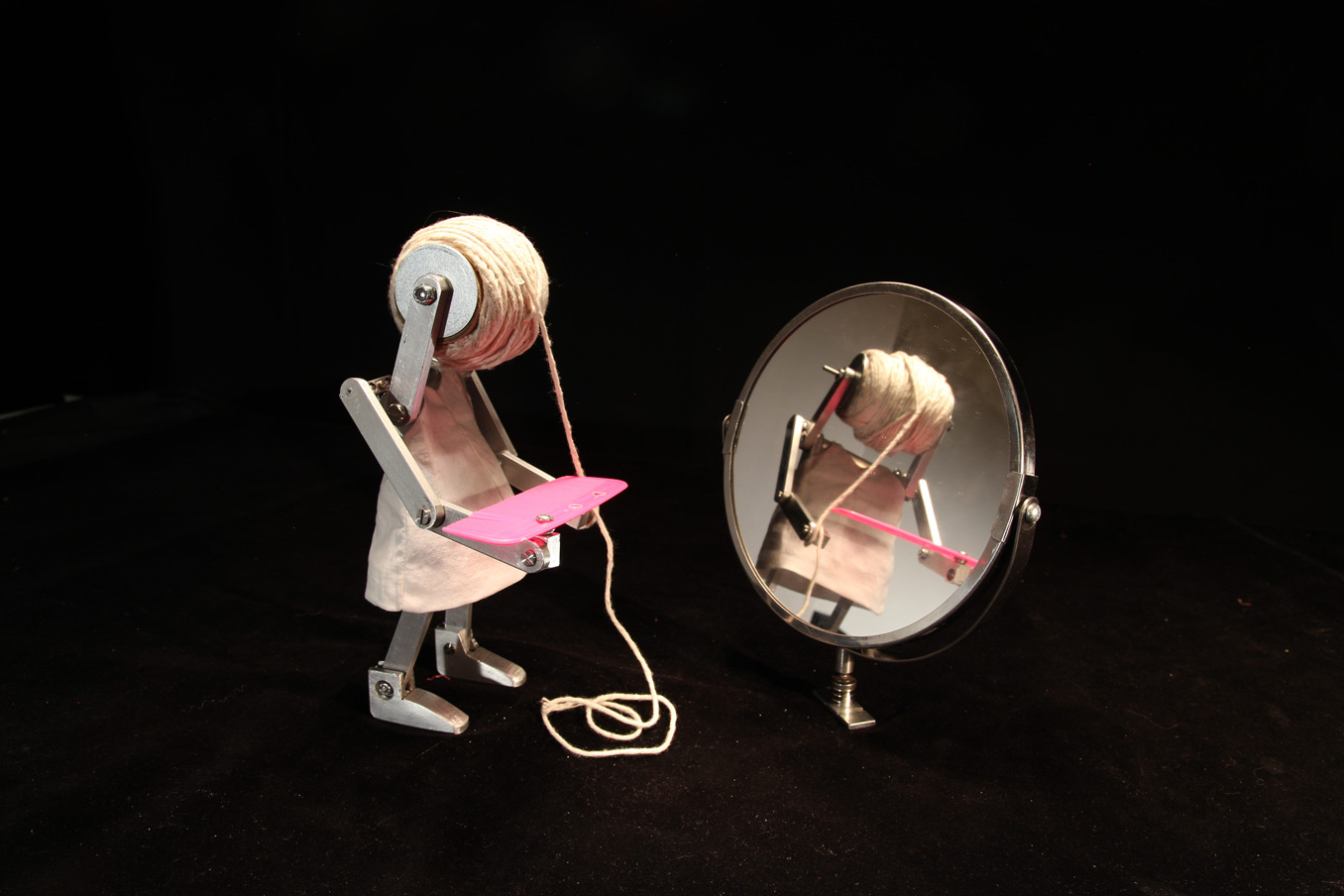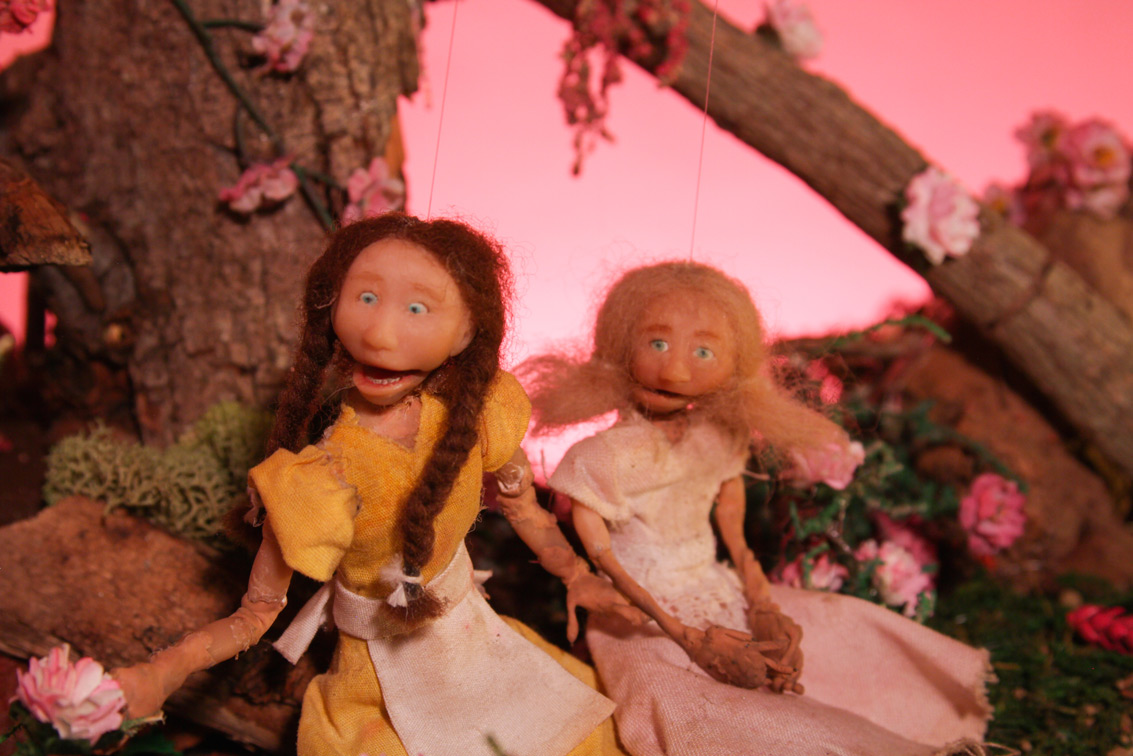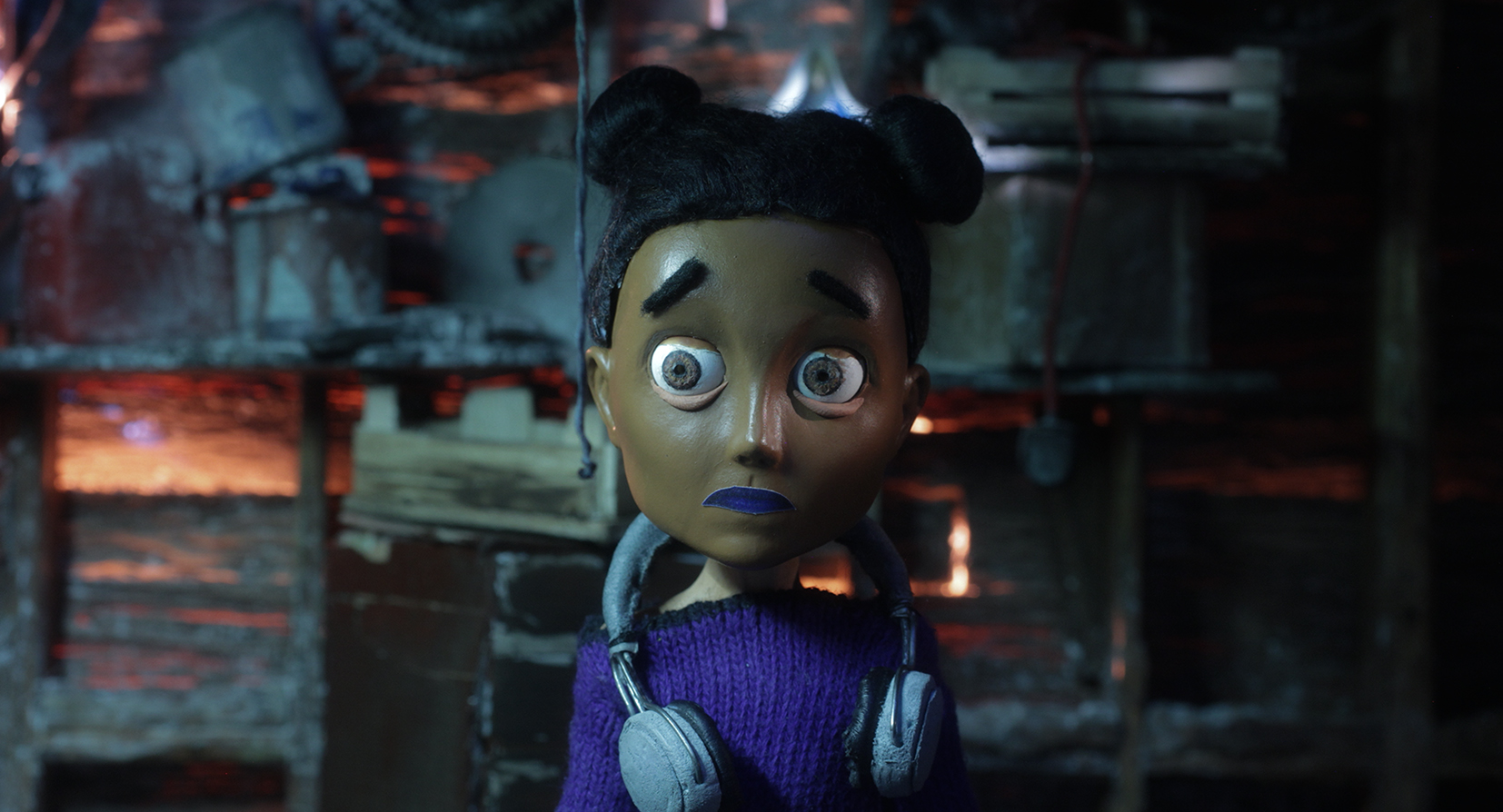‘Herself: Girlhood in Stop Motion Film’
SBCC Exhibit Documents Five Recent Productions

The illusion of motion is key to stop-motion film. The genre is rooted in technique: Each scene must be crafted, captured, and then pieced together so that thousands of unseen configurations become a solid motion. But stop-motion is equally about creating images or narratives that connect to experience. Indeed, these works can be just as much about reality as about fantasy.
Five examples of stop-motion films that highlight the emotional potential of the genre are presented in Herself: Girlhood in Stop Motion Film, an exhibit at Santa Barbara City College’s Atkinson Gallery. Curated by Sarah Cunningham, the exhibit features the work of Rita Basulto, Laura Krifka, Heidi Kumao, Kirsten Lepore, and Suraya Raja. Including production shots, figurines, and drawings, the exhibition takes girlhood as its central theme to explore topics such as grief, social norms, and coming-of-age.

Kumao’s “Dwelling” — an electronic figurine operating on a motor — will catch eyes and ears as one enters the gallery. Created as a figure in her stop-motion animation Erase, Replace, Repeat, the sculpture is housed in a bell jar and programmed to robotically wipe away condensation that is produced inside. Between sound, kinetics, and just plain innovation, the figurine is captivating and makes you laugh just as much as it makes you think.
Studies for Erase, Replace, Repeat are screened alongside “Dwelling” and show Kumao’s sculptural creations in various states of action. From combing hair to getting dressed, Kumao is interested in the way that ordinary gestures can be steeped in societal expectations — particularly for girls.
Mexico City–based artist Basulto’s Lluvia en los ojos focuses on a young girl named Sophia dealing with the loss of her grandfather. In her grief, she finds his tiny pet rhinoceros named Cornelius, who soon grows far too large for the house and must be set free. Amid the touching narrative that will make you consider the profundity of connection, the work is beautifully executed with brilliant use of light and landscape.
Musical choice is central to works by Krifka and Lepore. Ventura-based Krifka’s stop-motion animation Sow the Wind — set to an upbeat operatic overture — is perhaps the most traditional of the five films, particularly in her method of creating puppets that are an aesthetic mix of the grotesque and the fairy-tale-like. Lepore’s Move Mountain lures you in through a soothing, ambient choral arrangement and keeps you hooked until the end. The film centers on a Gumby-like figure struggling to survive in a macrocosmic landscape. Between a nighttime dance party scene that will have you smiling and a thrilling dash to safety, the work strikes the appropriate balance between playful and tense.

Finally, London-based Raja’s Don’t Think of a Pink Elephant focuses on a young woman named Layla dealing with her fear of sharp objects. The short film centers on the relationship between Layla and her little brother, who tricks her into overcoming her fear in order to save their cat. Superbly executed, the work is brave and relatable, as well as dark and suspenseful.
Production shots that show the artists creating puppet molds or constructing their fantastical sets remind one of how tedious the process that creates stop-motion works can be. With PuppetPalooza taking over Santa Barbara the first weekend of March, this show is a great way to start considering the place of storytelling within the act of making.
4·1·1
Herself: Girlhood in Stop Motion Film is on view at SBCC’s Atkinson Gallery (721 Cliff Dr.) through March 23. Due to explorations of mortality, violence, and mental health, the exhibit is intended for audiences 12 years and older.



